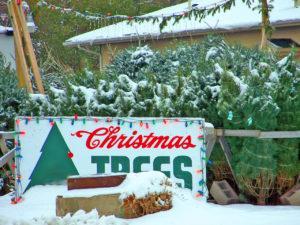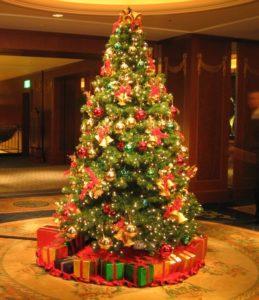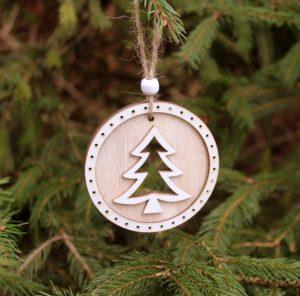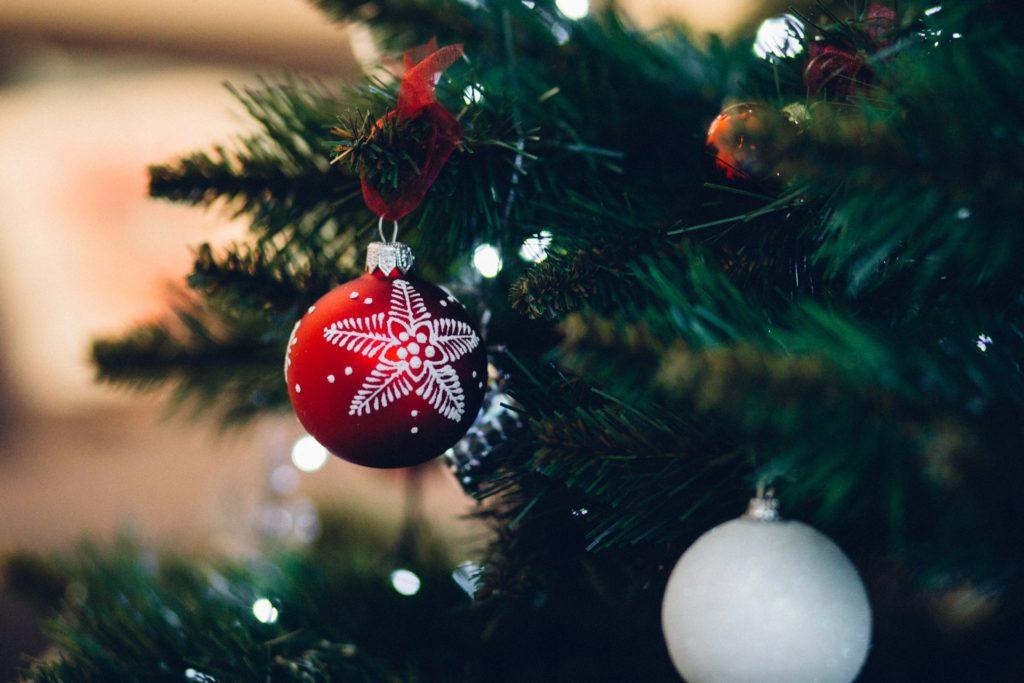 Picking a Christmas tree has become one of the most important December traditions. Think about your favourite festive movies – from A Christmas Story to National Lampoon’s Christmas Vacation, taking the family to the local lot or forest to get a tree is one of the most magical parts of the season. Sure, you might end up with soap in your mouth after or cut down a tree with a squirrel in it, but you had a ton of fun!
Picking a Christmas tree has become one of the most important December traditions. Think about your favourite festive movies – from A Christmas Story to National Lampoon’s Christmas Vacation, taking the family to the local lot or forest to get a tree is one of the most magical parts of the season. Sure, you might end up with soap in your mouth after or cut down a tree with a squirrel in it, but you had a ton of fun!
A new trend is quickly replacing the woodsy scent of real evergreens, though, as fake plastic Christmas trees are gaining in popularity. It’s understandable, really – it’s a one-time cost, there are no needles to clean up, and there’s nothing to haul out to the curb in January. But what do real tree specialists prefer?
The Various Species of Christmas Tree
One great thing about picking a real tree is the selection. In Ontario, there are a couple of common species you’ll find at the farms. Some are better than others, but you’ll find all of them for good reasons:
-
 White Spruce: A popular favourite due to its symmetry and dense foliage, making it great for ornaments. The stiff needles give it a pungent aroma, but this species needs a lot of water to keep them on the branches.
White Spruce: A popular favourite due to its symmetry and dense foliage, making it great for ornaments. The stiff needles give it a pungent aroma, but this species needs a lot of water to keep them on the branches. - Balsam Fir: From coast to coast, the Balsam is a Canadian classic. If you love to have your tree up early and long, it’s a good, hearty choice.
- Scotch Pine: A thick, heart tree, the Scotch Pine is a good choice if you don’t want needles falling all over the floor. As its name suggests, it’s not native to Canada – it’s an immigrant from Europe and Asia.
- White Pine: It’s a beautiful choice for sure, but the White Pine isn’t great if your family has a ton of ornaments. The needles are soft and very flexible, making it difficult to decorate.
- Colorado Blue Spruce: This is a great choice, despite the sharp needles. It’s thick, and hearty, making it great for decorating. The silvery-blue colour doesn’t look too bad, either.
All of these trees have their own special characteristics that make them unique. But then again, don’t fake Christmas trees come with special characteristics, too? You can get them in fun colours, and some have built-in lights while others play music. They can be cost-effective in the long run too, lasting Christmas after Christmas. A real tree can’t do that, so what’s the big deal?
The Arborist’s Perspective

Plastic might have some advantages, but you can’t compete with Mother Nature’s handiwork. As shown above, there are a lot of different trees, each with its own properties, but the true beauty of a real tree comes from how unique each individual one can be. Arborists love trees, so we won’t shy away from an opportunity to bring one indoors.
From an environmental point of view, real trees are better. It sounds like a contradiction, because you’re cutting one down and taking it indoors, but trees are a renewable resource. The growth of Christmas trees, which takes 8-10 years before its ready, helps to sequester carbon dioxide from the atmosphere. To keep in business, farms also have to plant a tree for every one they cut down. They also can be recycled, providing all-natural material for landscaping products like mulch.

Real tree farms are a big business in Canada. According to Stats Canada, the value of all trees sold in 2015, from the 2,381 farms that grew them, was $78.4 million! Another $41.4 million worth of fresh-cut trees was exported to countries as far away as Thailand. Most fake trees are imported to Canada from China, and are made with chemicals like polyvinyl chloride. The only way to make a plastic tree more environmentally “worthwhile” is to keep it for 20 years, but most families only hold onto them for an average of 6-9 years.
Though it might be our biases talking, Christmas is a great time to appreciate the beauty of trees up-close and patronize an environmentally-friendly industry. Real Christmas trees are fun in that there’s no “wrong” tree. As long as it’s a coniferous tree, you can do what you want: from ceiling-scraping giants to the droopy Charlie Brown types, the tree is what you take from it. So go the extra mile and keep a classic tradition alive – choose a real tree!

